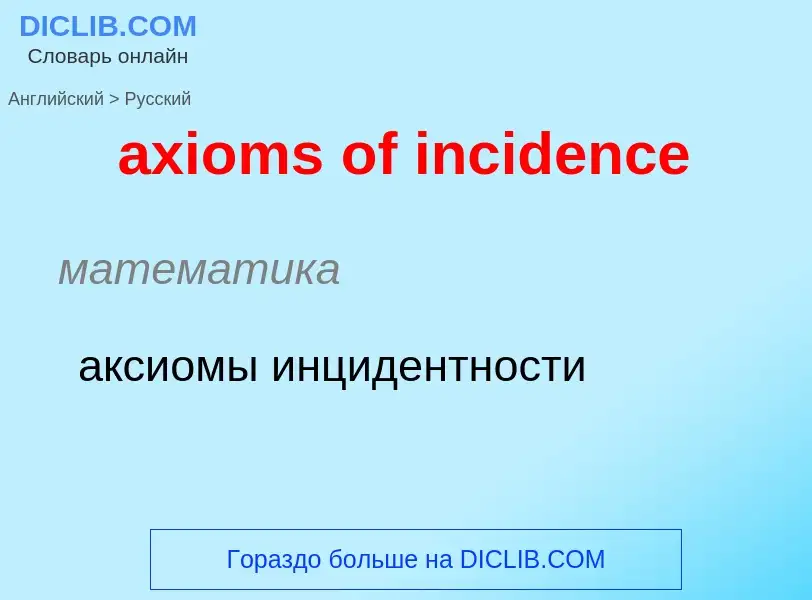Traducción y análisis de palabras por inteligencia artificial
En esta página puede obtener un análisis detallado de una palabra o frase, producido utilizando la mejor tecnología de inteligencia artificial hasta la fecha:
- cómo se usa la palabra
- frecuencia de uso
- se utiliza con más frecuencia en el habla oral o escrita
- opciones de traducción
- ejemplos de uso (varias frases con traducción)
- etimología
axioms of incidence - traducción al ruso
математика
аксиомы инцидентности
математика
арифметическая формула
математика
граф инцидентности
Definición
.
Wikipedia
In geometry, an incidence relation is a heterogeneous relation that captures the idea being expressed when phrases such as "a point lies on a line" or "a line is contained in a plane" are used. The most basic incidence relation is that between a point, P, and a line, l, sometimes denoted P I l. If P I l the pair (P, l) is called a flag. There are many expressions used in common language to describe incidence (for example, a line passes through a point, a point lies in a plane, etc.) but the term "incidence" is preferred because it does not have the additional connotations that these other terms have, and it can be used in a symmetric manner. Statements such as "line l1 intersects line l2" are also statements about incidence relations, but in this case, it is because this is a shorthand way of saying that "there exists a point P that is incident with both line l1 and line l2". When one type of object can be thought of as a set of the other type of object (viz., a plane is a set of points) then an incidence relation may be viewed as containment.
Statements such as "any two lines in a plane meet" are called incidence propositions. This particular statement is true in a projective plane, though not true in the Euclidean plane where lines may be parallel. Historically, projective geometry was developed in order to make the propositions of incidence true without exceptions, such as those caused by the existence of parallels. From the point of view of synthetic geometry, projective geometry should be developed using such propositions as axioms. This is most significant for projective planes due to the universal validity of Desargues' theorem in higher dimensions.
In contrast, the analytic approach is to define projective space based on linear algebra and utilizing homogeneous co-ordinates. The propositions of incidence are derived from the following basic result on vector spaces: given subspaces U and W of a (finite-dimensional) vector space V, the dimension of their intersection is dim U + dim W − dim (U + W). Bearing in mind that the geometric dimension of the projective space P(V) associated to V is dim V − 1 and that the geometric dimension of any subspace is positive, the basic proposition of incidence in this setting can take the form: linear subspaces L and M of projective space P meet provided dim L + dim M ≥ dim P.
The following sections are limited to projective planes defined over fields, often denoted by PG(2, F), where F is a field, or P2F. However these computations can be naturally extended to higher-dimensional projective spaces, and the field may be replaced by a division ring (or skewfield) provided that one pays attention to the fact that multiplication is not commutative in that case.



